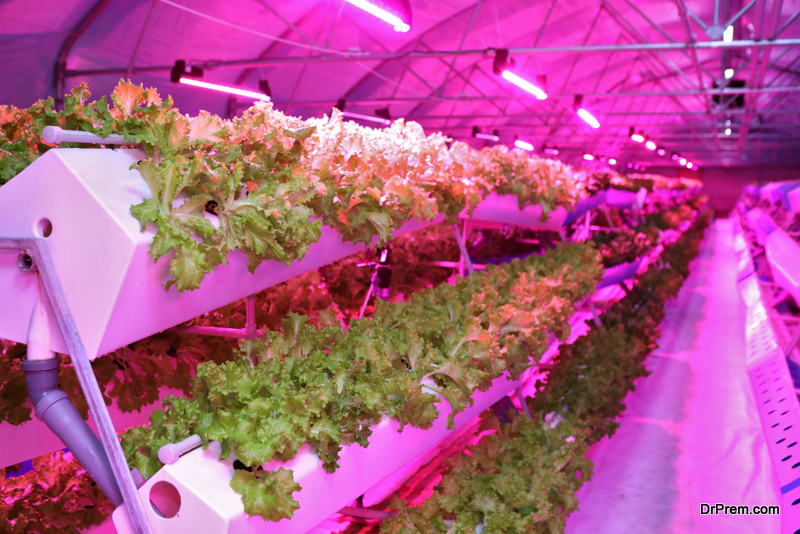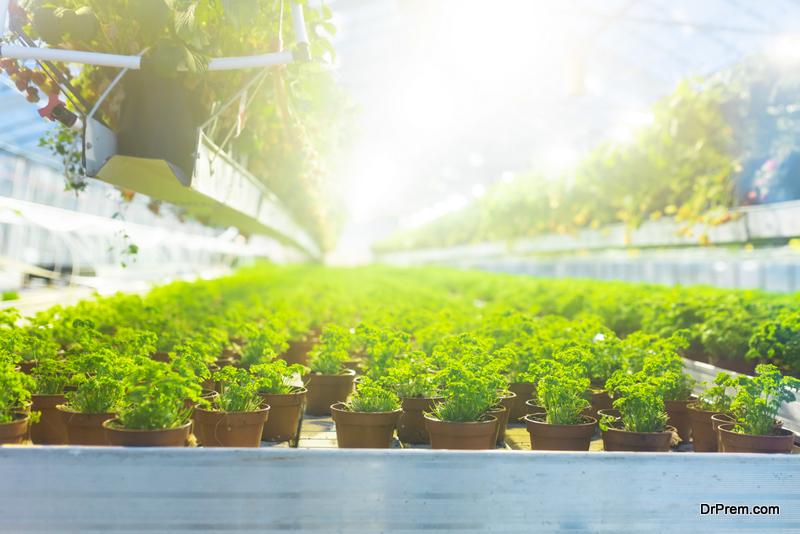By 2050, it’s expected that there will be over 9.7 billion people on the planet. This is a lot of mouths to feed daily and Forbes has reported that food production needs to rise by 70% in the next 30 years to meet this demand. However, this is bad news for the environment. Traditional farming practices are known to be energy and resource-intensive, therefore unsustainable. In fact, food accounts for over a quarter of global greenhouse gas emissions.
From start to finish, the food production process is unsustainable. Rearing livestock causes forest ecosystem destruction, releasing large volumes of carbon dioxide into the atmosphere and increasing the planet’s temperature. What’s more, animal manure and nitrogen-based fertilisers can contaminate groundwater, streams, estuaries and oceans, while traditional farming also requires lots of land and water, neither of which are infinite resources.
The collective opinion is that the agriculture industry needs to make appropriate changes to use less water and chemicals, decrease its contributions to climate change and produce more reliable yields. Could indoor farming be one solution?
What is indoor farming?
Also known as vertical farming, indoor farming is where farmers grow crops in a controlled environment. This might be inside buildings, shipping containers, old warehouses, or even in tunnels. Crops tend to be arranged in a stacked format, meaning farmers can grow more in a smaller area. The practice requires a range of equipment, including items like electrical conductivity meters (EC meters) to determine the water quality and nutrients, photosynthetic active radiation meters (PAR meters) to measure the intensity of light, and thermometers.
The indoor farming sector was worth £1.72 billion in 2018, and experts predict it will reach £9.84 billion by 2026. As more and more people flock to cities, this also means food doesn’t need to be transported as far, helping reduce harmful emissions while allowing farmers to grow fresh, pesticide-free food all year.
Hydroponic indoor farming
Most methods of indoor farming use a combination of hydroponics (replacing soil with nutrient-rich water) and artificial lighting, like LED lights, rather than utilising natural sunlight. The farmer is responsible for maintaining optimal nutrient levels in the liquid solution to ensure plants thrive, and to great success — plants grow 30-50% quicker in hydroponic farms than soil-based ones. Soilless growing mediums are more easily scaled, great for small spaces and use water more efficiently.
Aeroponic indoor farming

Another practice is aeroponics, which doesn’t need soil either. Seeds are ‘planted’ in pieces of foam stuffed into tiny pots which are then exposed to light on one end, and nutrient-mist on the other, providing plants with more oxygen and resulting in healthier roots and increased growth rates. Aeroponics also uses up to 95% less water than outdoor farming, no pesticides or fertilisers, and has a smaller carbon footprint.
Can indoor farming really solve the food production problem?
The pros of indoor farming
· Fewer resources used
Indoor farming uses fewer resources such as land and water, eliminates chemical-based fertilisers, and reduces transportation miles as the farms are located closer to local suppliers.
· Eco-friendly
It’s a more environmentally friendly alternative as there’s no need to fuel farming machinery or equipment. The process also uses less land and water, fewer pesticides or toxic chemicals, and creates less pollution.
· Less food waste
Food waste is a major problem with traditional farming methods with almost one third of produce wasted globally. Recycling is one way to help reduce the negative impact. As noted by Bywaters, which offers food recycling services: “Recycling food waste reduces how much of it enters landfill, where food can’t naturally biodegrade, releasing harmful greenhouse gases into the air.” However, indoor farming is another solution as it reduces the likelihood of food needing to be thrown away. This is because most indoor farms supply produce to the local area, meaning that items are grown nearer to the point of consumption and therefore stay fresher and last longer.
· Better use of space
Indoor farming encourages better use of space, is suitable for both small and large-scale operations, and can be successful in any climate or location. The typical stacking system used for indoor farming means that farmers can expand upwards and achieve higher productivity on a smaller land area.
· More reliable-yield
This agriculture method produces a reliable yield all year round, enabling constant production and increased food volume without compromising on flavour or quality. This is because growing indoors allows the farmer to control every aspect, such as temperature, humidity and air flow speeds, while outdoor methods mean battling weather elements, where there is a risk crops could be destroyed.
The cons of indoor farming
· High startup costs
While indoor farming is receiving praise, there are concerns about the price of setting it up. Initial start-up costs are high compared to current processes since urban space is typically more expensive than farmland.
· Energy usage
Another drawback is its energy usage. Indoor farming uses artificial lighting that consumes plenty of power and increases operational costs.
· Limited plants
Indoor farming is only suitable for certain kinds of plants too, such as leafy greens. It’s unlikely then that crops like wheat, corn, soy and rice are good candidates for indoor farming due to their high energy and space requirements.
Are indoor farmers succeeding?

Plenty of companies worldwide have successfully managed to pull off indoor farming. A farm owned by Square Roots, for example, produces the same amount of food as a two or three-acre family farm using just 340 square feet for production. In the aforementioned Forbes report, Chief Executive Tobias Peggs said: “Our indoor farms are living biosystems, constantly adapting to maintain optimal climates for growing specific crops. This is expected to help us adapt to a warming planet and can slow down climate change. We’re then able to understand how changes in the climate can impact yield taste and texture.” Meanwhile, there’s an underground vegetable farm in London in the UK, situated in an old World War Two bomb shelter beneath the city. Producing some of the freshest microgreens, including watercress, rocket and Thai basil, it runs on 100% renewable energy, uses recycled water and is pesticide-free.
A final note
Now we’ve explored how indoor farming works, its benefits and its flaws, and while it may not be completely eco-friendly just yet, it’s definitely on its way. In the years to come, the farming industry may experience a full overhaul to ensure practices are sustainable. As one Scottish farmer puts it: “Our industry is one that can change, and will change, to meet public aspirations with an upbeat, forward-thinking mindset.”
Article Submitted By Community Writer


